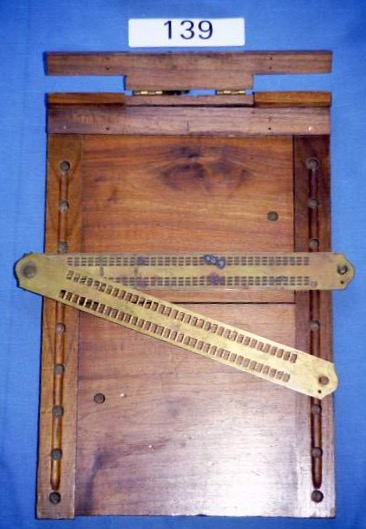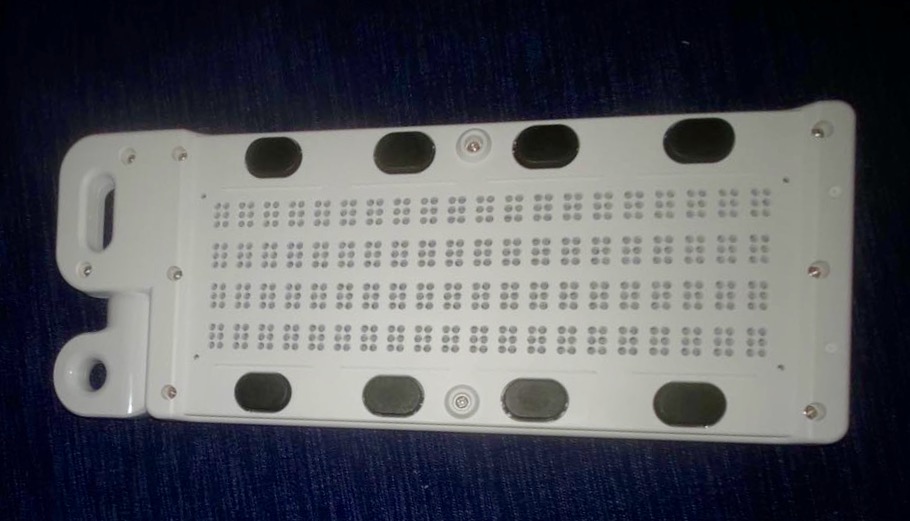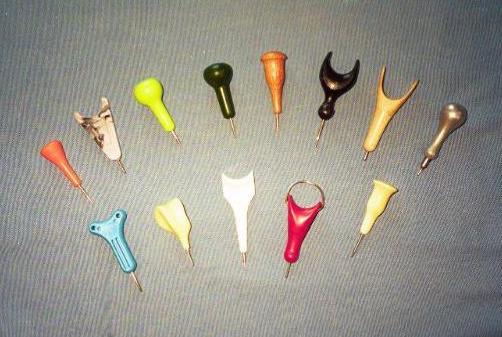

Welcome to the home page of Judy Dixon's Collection of Braille and Tactile-writing devices.
As a primary tool of literacy, the slate and stylus is a blind person's pencil with similar advantages--extremely portable, relatively low in cost, does not require batteries or electricity, and has no moving parts that can easily break.
This collection presently consists of 283 unique slates and other items from 38 countries.
The Versa Slate from South Korea is a unique, paperless slate. It has four lines, 20 cells. You can write on the front with the integrated stylus and the braille appears on the back. I am using it to quickly jot down a phone number, for a to-do list, or just to capture an idea that is trying to fly away.


For more information about the Versa Slate, go to 2braille.com.
I would like to thank the many friends and colleagues who have been so helpful in assisting me with this collection. Most particularly, I want to recognize the efforts of my good friend, Mr. Pedro Zurita, who has gathered slates on his many travels and without whose efforts this would be a much smaller collection.
If you have any questions/comments about the collection or have any slates that you would like to sell/trade or otherwise part with, please contact me at judy@judydixon.net.
Typically, a braille slate is a pocket-sized or desktop two-part hinged device. The front portion contains rows of rectangular openings which guide the stylus. The back portion has rows of indentations arranged in cells allowing the stylus to emboss dots on paper.
While in this collection there are numerous slates that meet this definition, there are also slates with no hinges, slates with no pins, slates that do not write on paper, and even slates that do not produce braille.
Writing on a slate is done with a stylus, consisting of a small handle made of wood or plastic with a sharp metal point. Styluses come in many shapes and sizes.

In the United States, slates and styli are available from a variety of sources.
The glorious variety of slates in the collection shows an enormous amount of creativity. But, unfortunately, the creativity was not always coupled with the best source of materials or production methods.
Are modern braille slates the best that they can be to facilitate the learning and enjoyment of writing braille by hand?
I have selected twenty-five slates from the collection to illustrate slate features that I hope will be an impetus for a consideration and discussion of the redesign of braille slates.
Here are the details for all the slates in the collection. They are arranged by country.